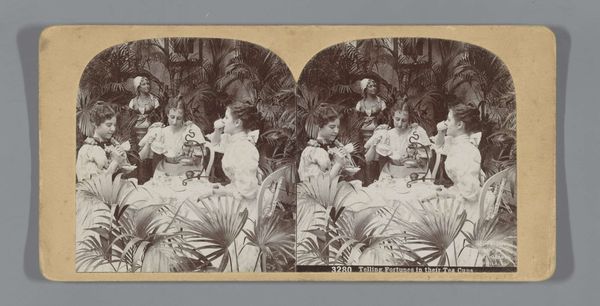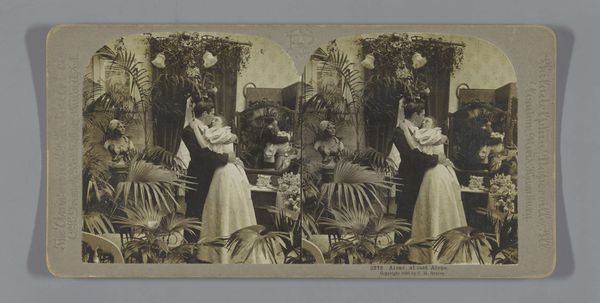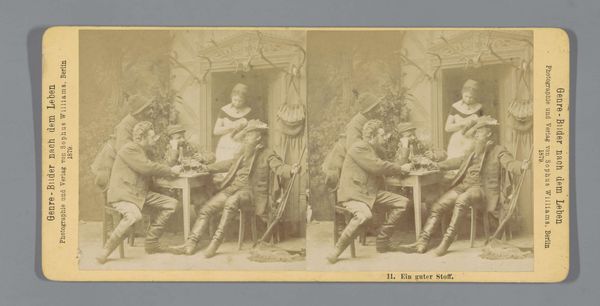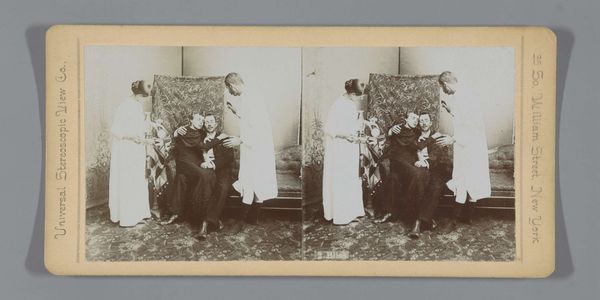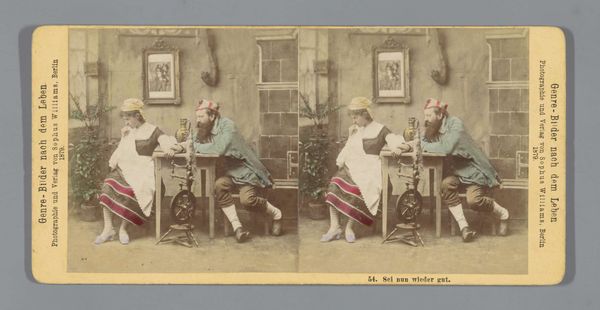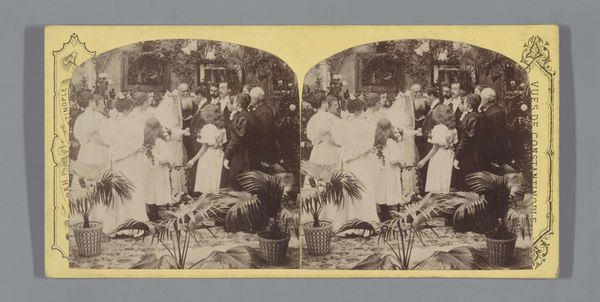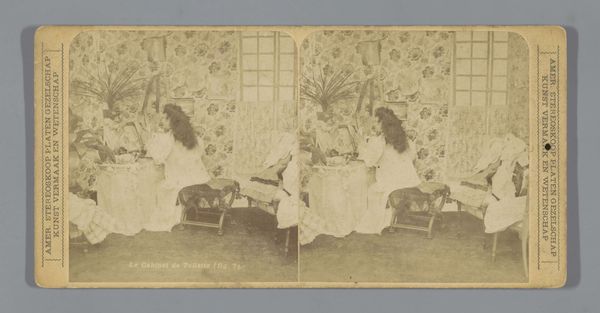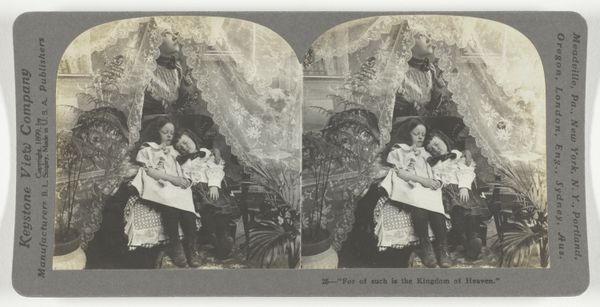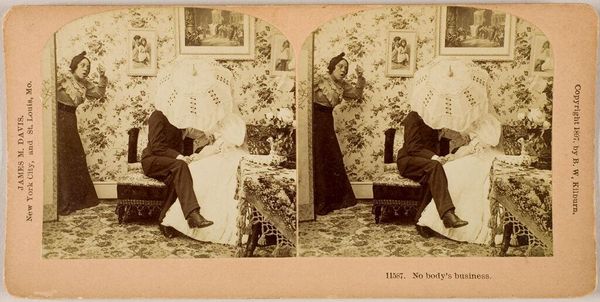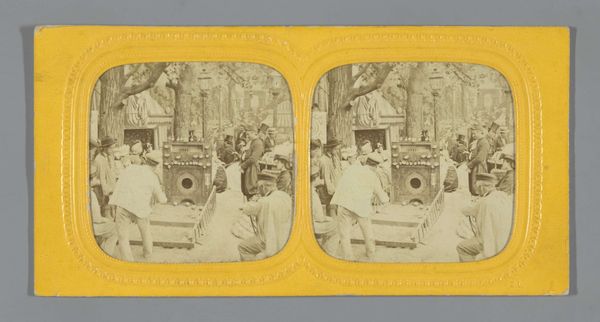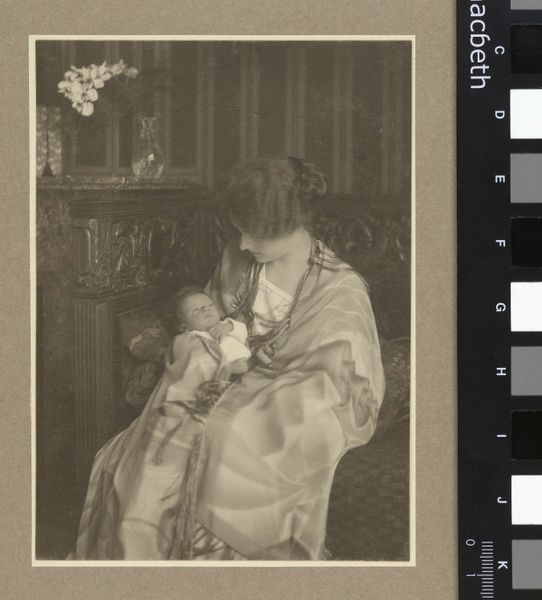
Dimensions: height 88 mm, width 178 mm
Copyright: Rijks Museum: Open Domain
Curator: This is a photographic print from 1897 entitled "Verliefd paar onder de Maretak," which translates to "Loving couple under the mistletoe," by Carleton Harlow Graves. Editor: My first impression? I sense a palpable tension, an almost staged romance unfolding within a constructed Eden. Curator: I agree, the constructedness is key here. Stereoscopic images like this became quite popular at the end of the 19th Century and speak to the era’s complex social norms around courtship. The photograph operates within a discourse of performative heteronormativity. We see these rigid roles on display: the man in his dark suit, the woman in a light dress, posed rather awkwardly, almost constrained in their expression of affection. How do you read the setting, particularly the symbolic implications of that mistletoe? Editor: Ah, the mistletoe! As a symbol, it's dripping with layers. From its ancient associations with fertility and vitality to its Victorian-era codification as a permissible excuse for a kiss, it embodies both freedom and societal constraints. The couple are surrounded by dense foliage that conjures a romantic but slightly claustrophobic image. The couple's interaction is, in a sense, sanctified by its presence, given a ritualistic weight. There are allusions to established power dynamics present that extend even into our present day. Curator: Precisely! That sanctioned kiss acts as a nexus of desire, propriety, and power, where the constructed performance tells us about the participants’ subject positions. Notice that it exists firmly within a consumerist culture increasingly concerned with shaping intimate experience. Editor: Absolutely, the entire scene has the aura of an orchestrated tableau vivant. The soft lighting, the arrangement of flora...it whispers of controlled emotion, an idealized moment carefully captured and disseminated. The mistletoe as an omen in the same way, representing both innocence and inevitable change. How has this interplay of innocence and transformation changed since the image was first constructed in 1897? Curator: In viewing it through a contemporary lens, we see an uncanny prediction of our present focus on visibility, presentation, and performed experiences within capitalist contexts. Editor: Well said. It leaves one pondering how much of what we perceive as authentic love is truly our own, and how much is shaped by cultural scripts and carefully constructed stages.
Comments
No comments
Be the first to comment and join the conversation on the ultimate creative platform.
